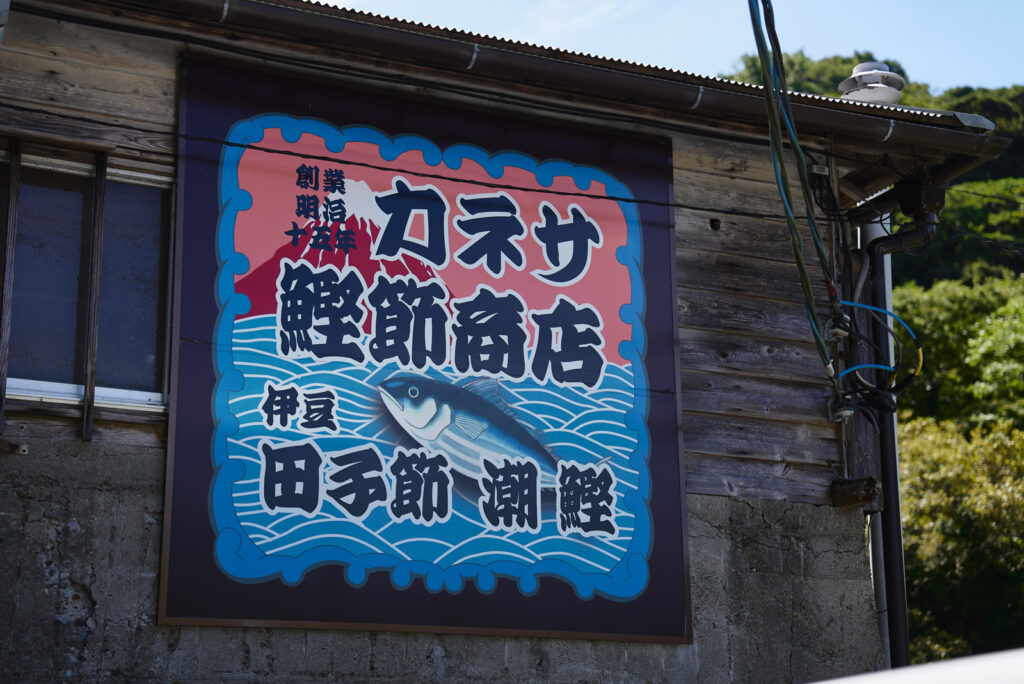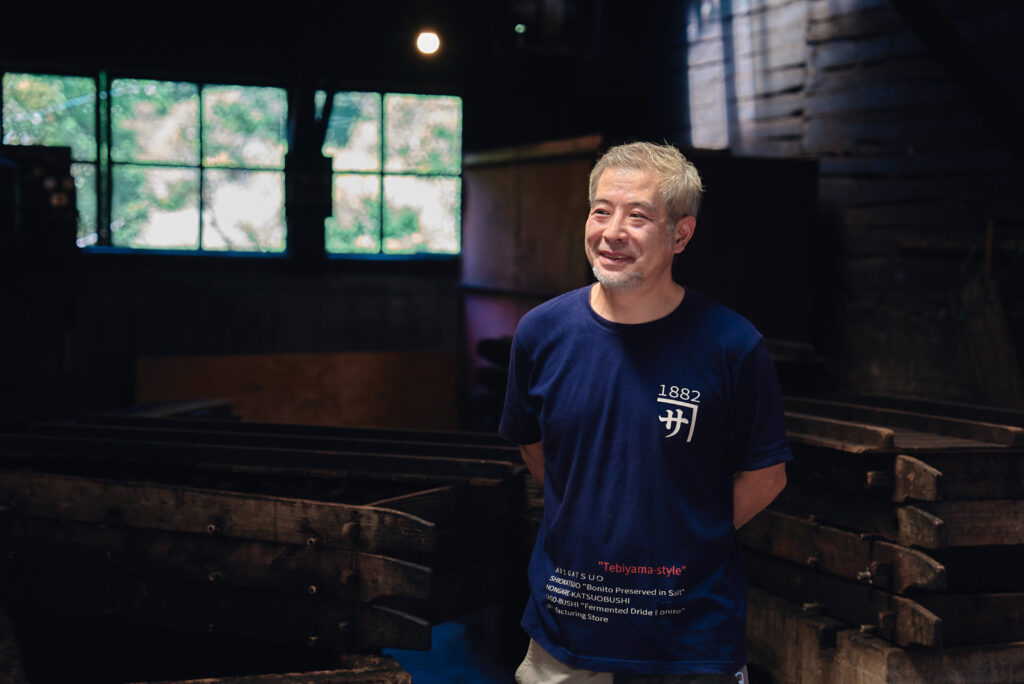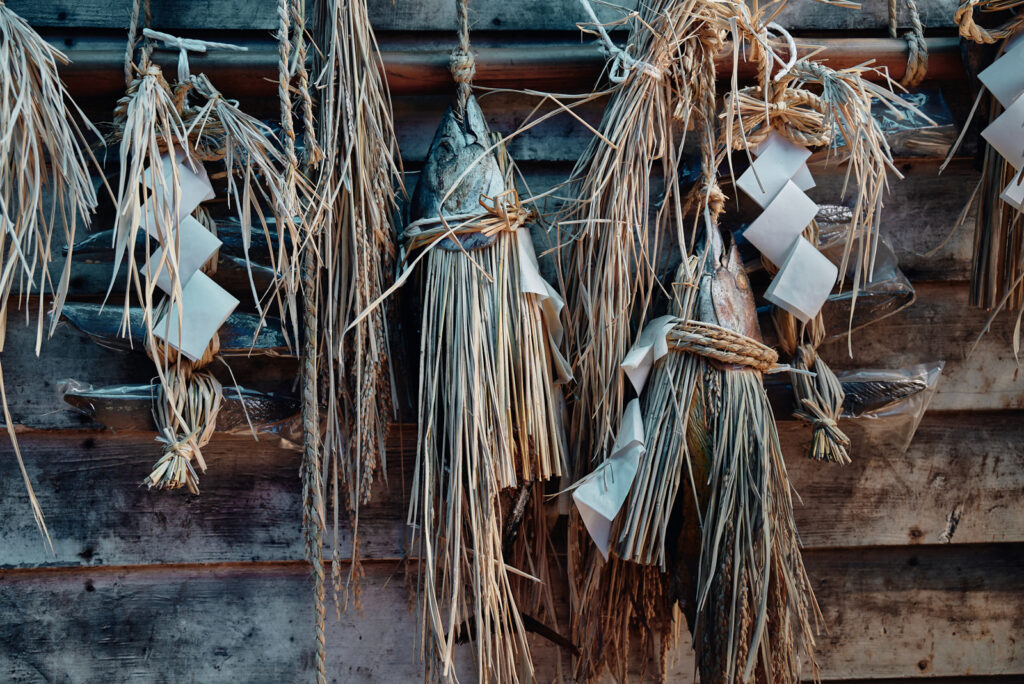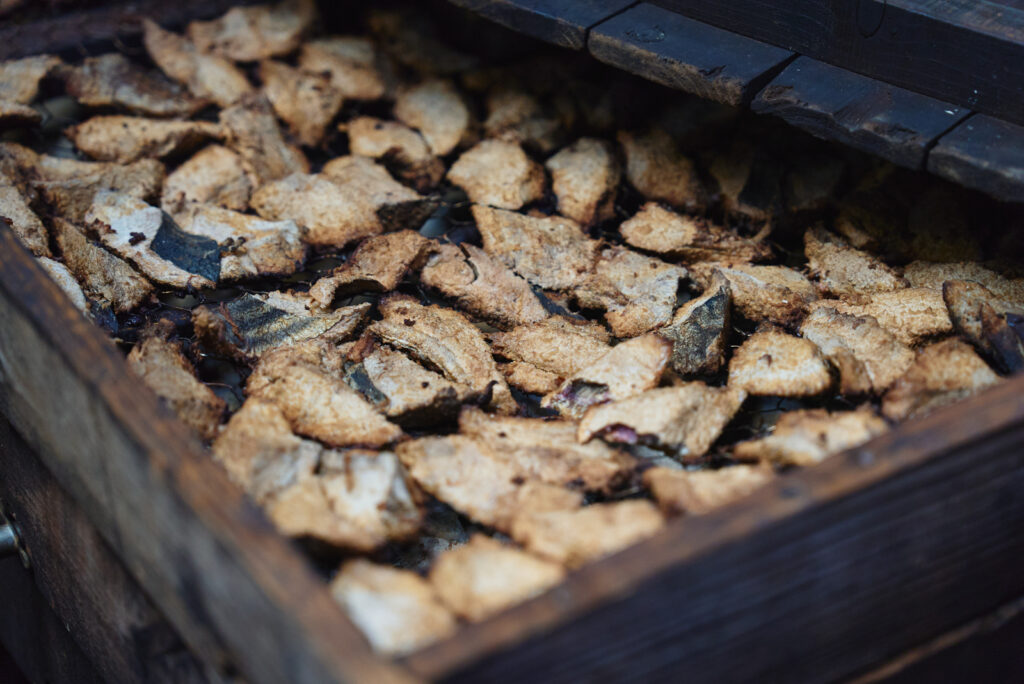The Tago area of Nishiizu has an old custom of celebrating the New Year with shogatsuyo (New Year fish), a phonetic play on the traditional preserved food shiokatsuo (salted bonito). Bonito is considered auspicious, since katsuo can also be written “winning fish.” This bonito is salted and dried whole, and used as a good luck charm to decorate the household Shinto altar or front door to pray for bountiful catches and fertility.

Nishiizu is the only town in the whole of Japan that continues to produce shiokatsuo today. Where there used to be some 40 processing plants, the number fell in conjunction with the decline of bonito fishing, and only three producers remain at present. One of them is Kanesa Katsuobushi Shoten, the only producer that offers straw-decorated whole shiokatsuo for use in a Shinto purification rite. The fifth-generation proprietor, Yasuhisa Serizawa, pours his soul into making shiokatsuo using production methods handed down since the business was founded in 1882, as well as hongare katsuobushi (bonito flakes) made with the traditional tebiyama drying method. He’s driven by a strong wish to uphold the local custom and culture.

“There’s a set of traditional rules even for the straw decoration. For example, the straw must come from rice grown locally during the past year. Rice is believed to be sacred because a single seed produces a great harvest. It holds divine powers and the spirit of the land. When decorated with that rice straw, the shiokatsuo becomes a sacred offering.”
Asked why shiokatsuo survived only in Nishiizu, Serizawa says it’s ingrained in the local culture.
“Shiokatsuo was traditionally a New Year talisman and purifier. The bonito graced the house’s Shinto altar, and then after a period of prayer, shared by the family as a purification rite. Just a single bite was believed to cleanse one’s sins, so the salted bonito was essential for purification and praying for sound health.”

In general, the custom waned over time owing to Japan’s low birthrate and aging population, and with the replacement of small fishing boats with larger vessels. But the town of Nishiizu long thrived on bonito fishing in the deep sea. For the crew of bonito fishing boats, shiokatsuo was also the symbol of a pledge.
“Crew members underwent purification before the first fishing trip of the New Year, because they couldn’t board their boat unless they were cleansed of their sins. So the boat owner began serving them shiokatsuo in a New Year feast. The crew was thus purified and qualified to fulfill god’s will. This was the three-way pledge between the fishing crew, the boat owner, and god. The owner made a strong commitment to guarantee the crew’s employment for a year, and this motivated the crew to work hard and helped to grow bonito fishing into a flourishing industry of Nishiizu.
”Shiokatsuo is said to have an even longer history than bonito flakes, with records saying it was consumed 1,300 to 1,500 years ago. Because it’s salt-cured for preservation, shiokatsuo tastes very salty. But Serizawa says there are plenty of ways to take advantage of and enjoy the salty flavor.

“Shiokatsuo can be thinly sliced and served with a squeeze of lemon, like dry-cured ham. If you aren’t a fan of salty foods, try rinsing the shiokatsuo in sweet vinegar—it will taste so good that you could keep eating it forever. When left hanging, shiokatsuo acquires a stronger, more defined flavor, meaning you can have fun with the changing taste over time. And grilled fillets are delicious added to ochazuke [tea over rice] and soups.”
Unfortunately, shiokatsuo is on the verge of extinction today. But Serizawa is on a mission to keep the custom alive and pass it on to posterity. He has invented a new local noodle dish that he named Nishiizu Shiokatsuo Udon. He also works to develop bold new products that are easy for beginners to try, like shiokatsuo-based furikake (rice seasoning), spices, and ice cream.
“Upholding a tradition takes more than just continuing to practice old production methods. By getting future generations to appreciate the custom and taste the product, I might be able to sustain it for good. That’s why I’m working to develop products that are approachable—to keep the tradition of shiokatsuo alive. I’m hoping that the products will pique the consumers’ interest in our culture of shiokatsuo too.”
Kanesa Katsuobushi Shoten
600-1 Tago, Nishiizu-cho, Kamo-gun, Shizuoka
Tel: 0558-53-0016












